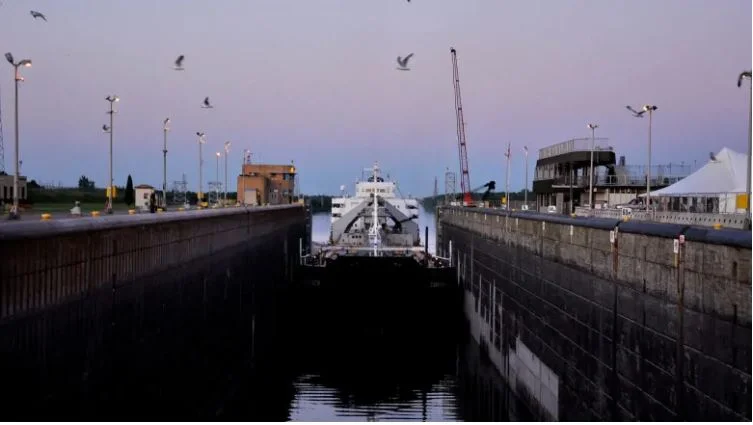Unusually high levels of rainfall in the autumn led to the third wettest fall on record which created higher levels in Lake Ontario water levels, said joint U.S.-Canada regulators governing water levels. The International Lake Ontario-St. Lawrence River Board said in a statement, “Lake Ontario is currently 34 cm (13.4 inches) above the long-term average (1918-2020) and 34 cm (13.4 inches) below the record high set in 1945 for this time of the year. “In terms of total water supply to Lake Ontario, September through November 2021 was the third wettest fall on record. As a result, Lake Ontario experienced the third largest rise in water levels in October. The lake rose 8 cm (3.1 inches) as opposed to decreasing an average of 11 cm (4.3 inches) typically experienced that time of year.”
St. Lawrence water levels could wash away more than $1B
Rising water levels in the St. Lawrence Seaway could cost the economy more than $1 billion, shippers and port operators say. A new study from the Chamber of Marine Commerce warns that opening the floodgates further at a dam in Cornwall, Ont., would wash away between $1 billion and $1.75 billion in revenue for businesses on both sides of the border. A board of control recently increased the flow at the Moses Saunders Dam — the only control point on the St. Lawrence Seaway, which includes the Great Lakes — to allow 10,400 cubic metres of water per second out of Lake Ontario.



